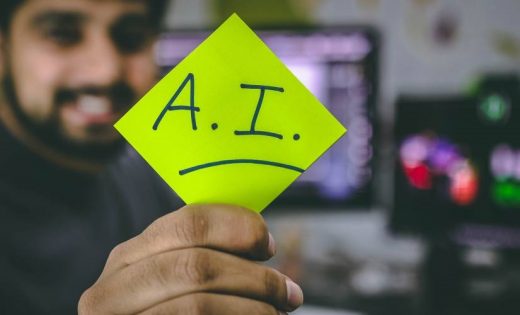3 Ways Artificial Intelligence Could Boost the Success of Your Business
3 Ways Artificial Intelligence Could Boost the Success of Your Business

As the artificial intelligence field continues to grow, businesses across the country have found that techniques are coming out of the research lab and into the applied realm to benefit their operations.
Recently, Boston Medical Center implemented predictive analytics into its system to determine staffing during the hospital’s busiest hours. Armed with this information, the center is able to adequately staff various areas of the hospital to ensure patients receive timely treatment. This technology doesn’t just stop the hospital from being short-staffed — it drastically improves the efficiency and response time for every patient.
Netflix and other entertainment sites commonly take advantage of this technology by suggesting shows for users to watch based on a variety of behavioral factors.
With AI, businesses such as these have the power to measure and collect data, recognize patterns, and make inferences. This vastly improves the cloud experience for businesses and their customers.
AI grows in scope by the year, and there are countless possibilities that business can take advantage of. It’s crucial for you to find out the areas in which you need the most focus and then go after the AI-based tools and skills that’ll ensure success. Here are three ways AI can help if you’re looking to expand your business’s capabilities:
1. AI enables perception.
Humans can look at images and get a clear understanding of who’s involved and what’s taking place in just milliseconds. With the help of AI, machines can now do the same thing. Implementing these kinds of tools gives businesses the unique ability to perceive what’s happening. This has many useful applications, from reading radiological scans to automatically inspecting equipment in factories to automatically detecting buildings in satellite imagery.
In one recent example, a Japanese cucumber farm adopted TensorFlow technology to ease the time-intensive task of grading cucumbers by quality — a job that can take many hours to accomplish manually. The farm took pictures of its produce and trained deep learning technology to see what it could find. In time, the system could identify some of the most important features and characteristics of each cucumber and sort it with a good degree of accuracy.
There are several tools available to companies that want to try adding similar capabilities to their own workflows. For example, Amazon’s Rekognition technology adds image and video analysis to applications. Users can upload files into the Rekognition application programming interface, and the service examines the content’s attributes. It then provides an accurate analysis to the user. It could help businesses verify the identity of users, count how many people are in attendance at events, and keep areas safe.
Computer vision is one of the newest and most exciting areas of applied AI. Once fully trained with comprehensive data sets, machines will meaningfully augment human capabilities — they’ll be able to process a larger amount of image and sound data with a higher level of accuracy.
2. AI improves pattern recognition.
Computers have historically been a tool for determining meaningful patterns from large data sets. As businesses continue to expand customer data assets, it’s crucial for them to be able to recognize more complex customer patterns using more advanced techniques to remain as customer-centric as possible. Continuing improvements in computing power and storage availability mean that machines can now process vast amounts of data — way more than any individual or team of humans can assess.
For example, pattern recognition gives businesses the ability to make service or item suggestions to new customers based on their activity and profile. Companies like Babylist use predictive customer analytics to identify items consumers might like to register for or purchase. Google and Facebook use a similar approach to serve ads that users are likely to click on.
Another more common example of how businesses can use this type of AI is recognizing customers who are likely to churn. By looking at user data to assess whether they are going to stop using a product or service, companies can intervene with special offers or other attempts to retain business. Customer churn can have a particularly big impact in industries where consumers have a lot of choices. For example, many software-as-a-service companies look closely at this, as do telecom companies.
In addition to businesses, the medical system benefits from this type of pattern recognition and inference. Companies like Better Therapeutics provide members with personalized care recommendations based on data.
All of these data sets are so big that no human can possibly look at all of the available information and make sense of it, but the computer algorithms can.
3. AI refines predictions about the future.
Unlike perception or recognition, when an objective truth can be verified by humans during the algorithmic training process, future predictions deal with intrinsic unknowns.
The classic example of this is the stock market: If you can predict where it’s going to go, you can make a lot of money. Unfortunately, there just isn’t anything predictable about stock markets. But the significant potential payoff incentivizes people to bring in all sorts of data sets to try to gain an edge. One extreme example of this is market intelligence platform Numerai, a crowd-sourced hedge fund built by data scientists all over the world.
Predicting the future has long been a holy grail of data science and artificial intelligence because the potential rewards are so huge, but many challenges remain.
Just as there’s a difference among these three areas in terms of the order of magnitude of impact, there’s also a difference in terms of data engineering and deep learning. AI for perception is an entirely new superpower to apply. AI for finding patterns in data improves performance relative to previous techniques. Predicting the future remains challenging, with some opportunities for refinement.
You’re not going to hire a statistician who does time series data forecasting and then expect her to put a computer vision deep learning model into production — those are two different things, even though at this point they’re both under the AI umbrella. Ask yourself which of these areas your business needs most, and then focus on going after the tools and skills that you need to implement it.
The post 3 Ways Artificial Intelligence Could Boost the Success of Your Business appeared first on ReadWrite.
(6)


